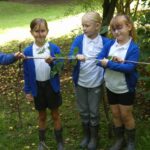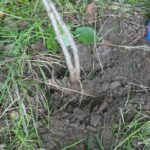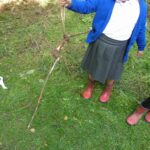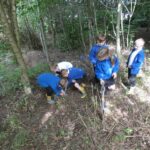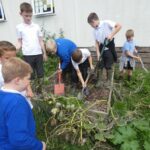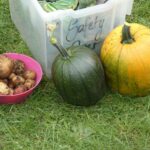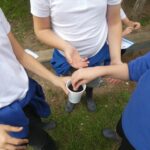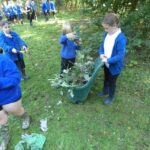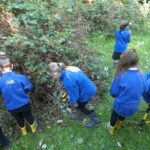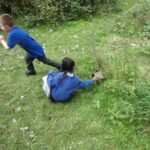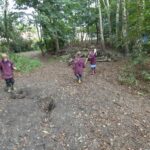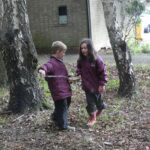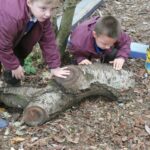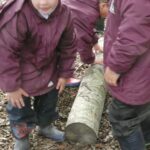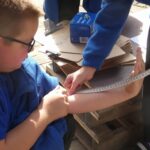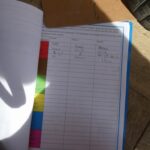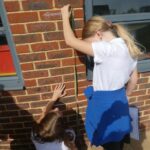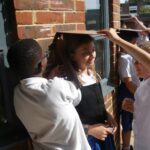Longitudinal Study
Autumn 1 sees the start of the longitudinal study for each year group. The children are split into four working groups each with a different area of study.
Year1: how does the OC change with the four seasons?
1: using log boxes the children took the temperature of the amphitheatre and Bluebell Wood.
Why did we use these 2 locations?
2: using a spotter sheet for identification the children coloured in the leaves they could find.
Can you explain how you could identify a leaf?
Year 3: How do the plants in the OC support the animals living there?
1: after choosing a tree that the children think is the oldest, they collect evidence of animals living in that tree. This data is then recorded and kept in their science document.
What is an ecosystem?
2: using the Autumn 1 bug sheet the children record the animals they have discovered in leaf litter.
What method did you use to explore the animals in the leaf litter?
3: to keep areas maintained for the animals to thrive they need to be cleared. The debris is then placed onto the compost piles.
Why is compost important?
4: grassy areas are really important for some of our bugs. The children identified saplings and whips that needed to be removed.
How does the removal of these plants help?
Year 4: What is the top predator in the OC and why have they chosen to live there?
1; using Bluebell woods as their research area the children looked for evidence of the 3 groups found in the food web.
Can you name the 3 groups?
2: to record the number of acorns an oak tree can drop a rope was used to create a circle in which the children were able to count and record in their science document.
What group does the oak tree belong in?
3: after discussing the different foraging items that can be found, the children identified berries and talked about the safety aspect involved in picking and eating them.
Can you name some berries you cannot eat without cooking them first?
4: the children cut back the blackberry bushes after the berries had been picked.
Why do the bushes need to be cut back?
What will you do with the picked berries?
Year5: Do all living things start and end the year in the same way?
1: trees have a life cycle and seasonal cycle; the children observed and recorded their findings which included a prediction.
Name the type of trees you observed?
What was your prediction?
2: the veg beds are also seasonal; the children harvested and cleared the beds.
What did you harvest?
3: to follow the life cycle of a plant the children used a garlic bulb as their project. They drew and labelled a diagram as evidence to put in their science document.
Year 6: humans have a life cycle and we go through different stages.
Year 6 will observe their own growth as well as a group of year ones.
1: Using the science document they completed a hypothesis sheet and prediction.
2: after practising the correct way to use a tape measure the children checked and recorded each other’s height and arm length and recorded their shoe size.
What is your prediction?


